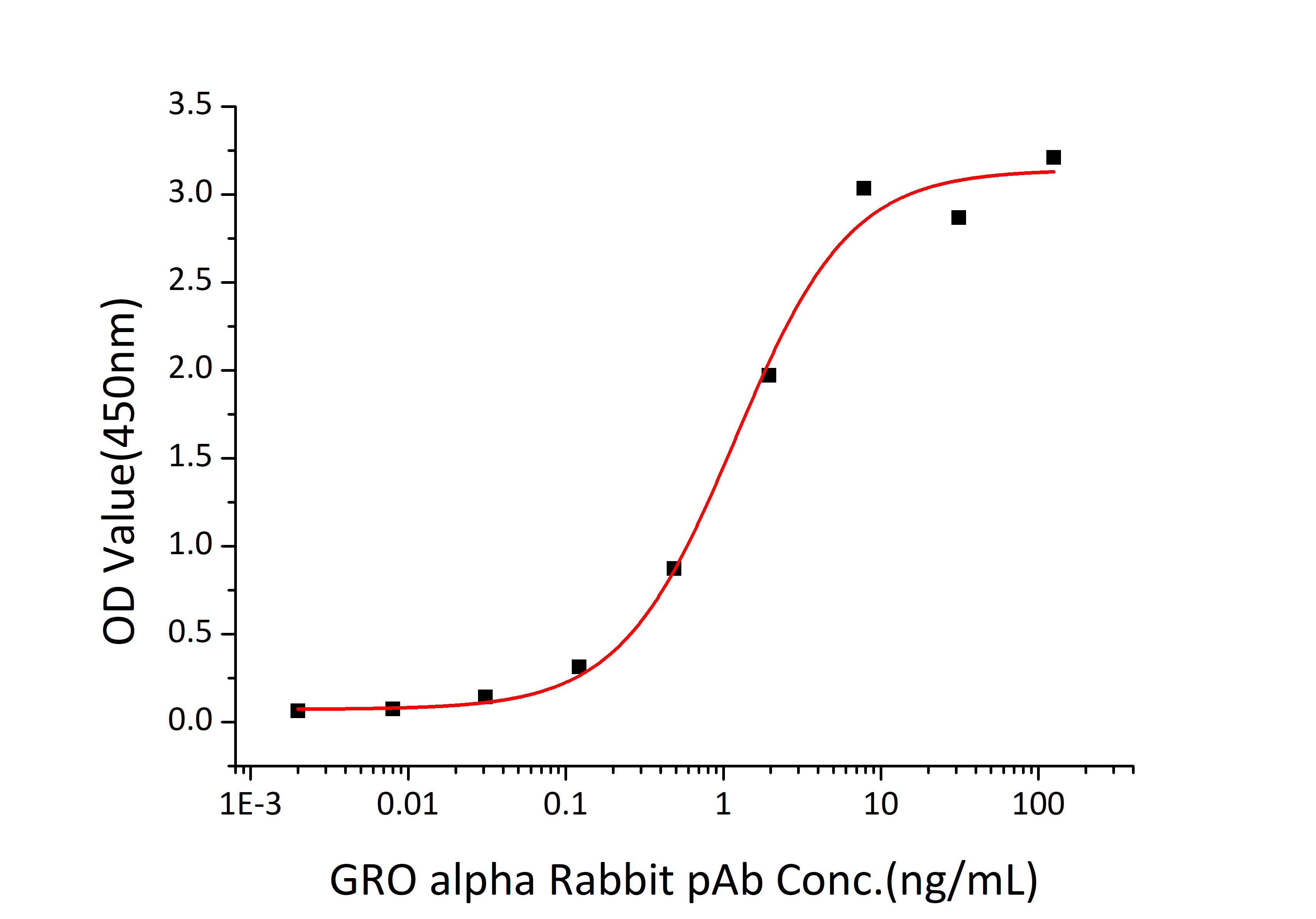Description
Recombinant Mouse CXCL1/GRO-alpha Protein
The Recombinant Mouse CXCL1/GRO-alpha Protein is a high-quality recombinant protein designed for murine biological research applications. This protein serves as an essential reagent in mouse model studies, comparative immunology research, and preclinical therapeutic evaluations, enabling scientists to investigate CXCL1/GRO-alpha biology and its relevance to human disease mechanisms through translational research approaches.
This product (SKU: RPCB1285) is produced using Pichia and features a No tag tag for convenient detection and purification. The protein exhibits a calculated molecular weight of 9.31 kDa with an observed molecular weight of 10-15 kDa under denaturing conditions, achieving ≥ 95 % as determined by SDS-PAGE.. Functional bioactivity has been validated through rigorous quality control assays, confirming its suitability for demanding research applications.
Key Features
| High Purity by Affinity Chromatography | |
| Mammalian & Bacterial Expression Systems | |
| High lot-to-lot consistency via strict QC |
| Product Name: | Recombinant Mouse CXCL1/GRO-alpha Protein |
| SKU: | RPCB1285 |
| Size: | 10 μg , 20 μg , 50 μg , 100 μg |
| Reactivity: | Mouse |
| Synonyms: | FSP, GRO1, GROa, MGSA, MGSA-a, NAP-3, SCYB1, CXCL1 |
| Tag: | No tag |
| Expression Host: | Pichia |
| Calculated MW: | 9.31 kDa |
| Observed MW: | 10-15 kDa |
| Gene ID: | 14825 |
| Protein Description: | High quality, high purity and low endotoxin recombinant Recombinant Mouse CXCL1/GRO-alpha Protein (RPCB1285), tested reactivity in Pichia and has been validated in SDS-PAGE.100% guaranteed. |
| Endotoxin: | < 0.1 EU/μg of the protein by LAL method. |
| Purity: | ≥ 95 % as determined by SDS-PAGE. |
| Formulation: | Lyophilized from a 0.22 μm filtered solution of PBS, pH 7.4. |
| Bio-Activity: | Measured by its binding ability in a functional ELISA. Immobilized Mouse CXCL1 at 2μg/mL (100 μL/well) can bind GRO alpha Rabbit pAb with a linear range of 0.6-2.37 ng/mL. |
| Reconstitution: | Centrifuge the vial before opening. Reconstitute to a concentration of 0.1-0.5 mg/mL in sterile distilled water. Avoid vortex or vigorously pipetting the protein. For long term storage, it is recommended to add a carrier protein or stablizer (e.g. 0.1% BSA, 5% HSA, 10% FBS or 5% Trehalose), and aliquot the reconstituted protein solution to minimize free-thaw cycles. |
| Storage: | Store at -20℃.Store the lyophilized protein at -20℃ to -80 ℃ up to 1 year from the date of receipt. After reconstitution, the protein solution is stable at -20℃ for 3 months, at 2-8℃ for up to 1 week. |
This antimicrobial protein belongs a member of the CXC subfamily of chemokines. The encoded protein is a secreted growth factor that signals through the G-protein coupled receptor, CXC receptor 2. This protein plays a role in inflammation and as a chemoattractant for neutrophils. Aberrant expression of this protein is associated with the growth and progression of certain tumors. A naturally occurring processed form of this protein has increased chemotactic activity. Alternate splicing results in coding and non-coding variants of this gene. A pseudogene of this gene is found on chromosome 4.








